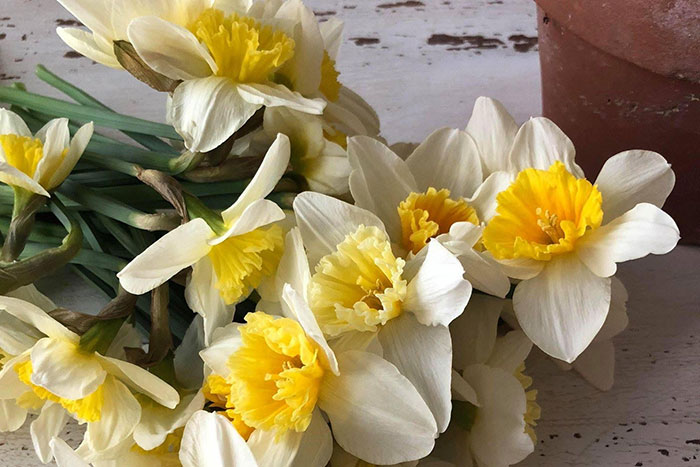Plan now to take your gardens and flower fields a step beyond the traditional, come spring.
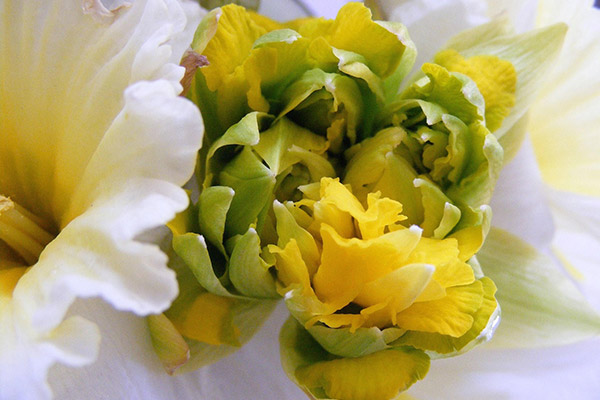
As we approach the middle of autumn, I’m sure you have put a lot of thought into what flowers you’ll need for this fall planting period. Maybe you’re ahead of the game and have already ordered and received yours!
But that doesn’t necessarily mean you’re done planning. You should still be thinking about it as you clear your gardens and flower fields of annuals and debris–and keep them maintained for the next crop by adding compost and other nutrients.
I recommend that you do some journaling of the planning process. Visualize the areas as you consider size, colors, regular tulips, prized tulips, favorite bulbs, favorite colors, early bloomers, midseason bloomers, late bloomers—you know, all the info you wish you had journaled last year.
Just be sure to create that journal this time around. It makes for a smoother growing season and can help boost your sales. (Shown below is a quick draft of how we do things here at the farms.)
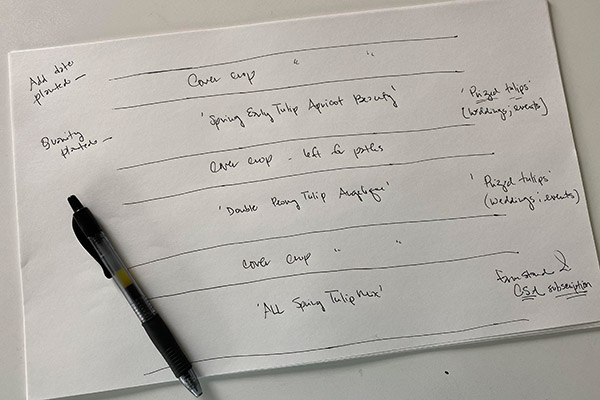
Being a flower farmer requires knowledge of your garden zone to understand how your plants and bulbs can do their best during the growing season. Every growing area is within a garden zone, which is the defined range of climate conditions relevant to the plant growth and its survival. Finding that zone for your particular area is quite easy with K. van Bourgondien’s Zone Finder.
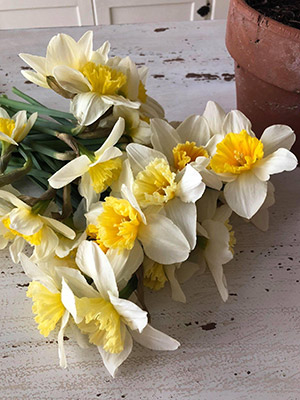
Here in Kentucky, I’m gardening in zone 6b, which gives me a wealth of things to grow. My bulb-planting time runs from mid-October to mid-November, being cautious of early ground freeze.
Now, if you’re not familiar with your USDA Hardiness Zone, I encourage you to find that important info before going any further!
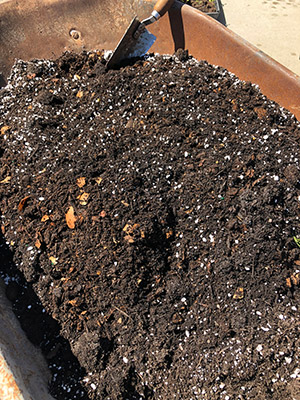
With bulb season upon us here at the farm, we’re working steadily to mend the soil by adding seasoned compost and a blend of fish and seaweed. Bone meal can be added for extra nutrients, especially if you’re preparing a new area for planting.
We plant in mass quantities to help ensure orders are filled come spring, along with weekly bouquets and events being satisfied.
There are many different ways of planting for flower farming: in the ground (the most common), in containers or in structures called high tunnels, which are used to produce an earlier bloom.
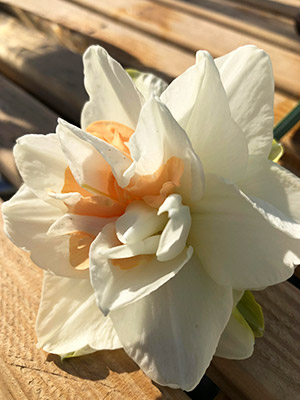
One question to ask yourself is: Will I be cutting flowers at their stem or near the bulb as each bloom matures to the desired stage? Here I’m speaking of daffodils and tulips, but this question is different for each flower farmer.
As the moment approaches for planting here at the farm, I’ll be sharing our progress and how we do each step, as well as how we plant in sessions that keep bulbs from blooming all at once.
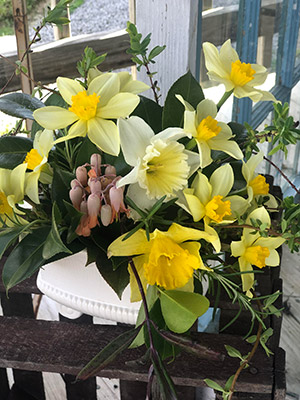
Again, as if I can’t speak it enough, ALWAYS have a plan—flower farming doesn’t allow much room for mishaps! Happy gardening from our farm to yours.
–Pamela Anthony
Beehind Thyme Farm & Garden
